Ashi Sabaki -足さばき
Perhaps the most important aspect of
The footwork, most commonly employed in
Within the
Perhaps the most important aspect of
The footwork, most commonly employed in
Within the
| The most common form is |
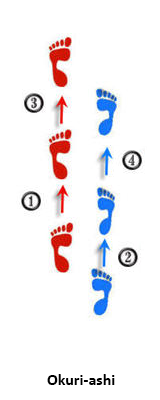
|
To cover long distances, |
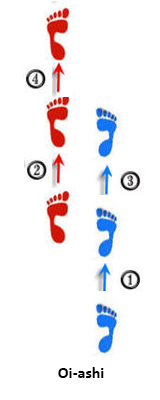
|
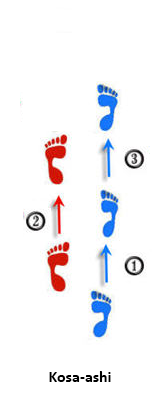
|
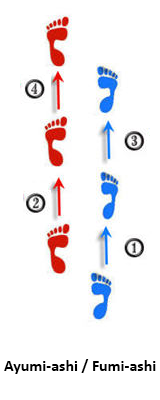
|
| Ashi Sabaki | Footwork | Voetenwerk | |
|---|---|---|---|
前に |
Forward | Naar voren |
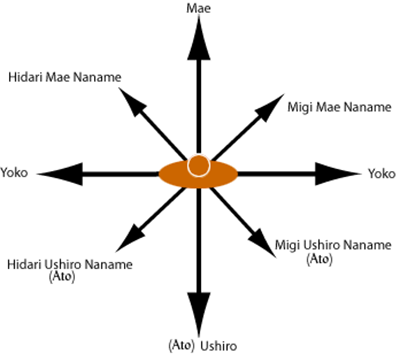
|
後ろに |
Backward | Naar achteren | |
右に |
Back to the right | Terug naar rechts | |
後方右に |
Back to right back | Terug naar rechts achteren | |
四十五 / 斜め |
45 / Diagonal | 45 / Diagonaal | |
足捌き |
Footwork or foot movement | Voetwerk of voetbeweging ( |
|
四足捌き |
|||
体捌き |
Body movement, shifting or evading ( |
Beweging van het lichaam, verschuiven of ontduiken ( |
|
摺り足 |
The sliding movement in which all the footwork is performed. | De glijdende beweging waarin al het voetenwerk wordt uitgevoerd. | |
踏み足 |
Normal steps ( |
Normaal stappen ( |
|
歩み足 |
Walking in a Budo-way, where the feet alternately slide one in front of the other along the floor ( |
Wandelen op een Budo-manier, waar de voeten afwisselend de een voor de ander langs de vloer glijden ( |
|
送り足 |
Moving with the first leg, the rear leg closes gradually. | Bewegen met voorste been, het achterste been sluit geleidelijk aan. | |
送り足 |
Moving with the first leg, the rear leg closes gradually. | Bewegen met voorste been, het achterste been sluit geleidelijk aan. | |
追い足 |
Steps where the rear foot first encounter with the front foot and then immediately the front foot slides forward. | Stappen waar de achterste been eerst aansluit met het voorste been en dan meteen het voorste been naar voren schuift. | |
交叉足 |
Steps where the rear foot first encounter with the front foot and then immediately the front foot slides forward. | Crossover stap, benen kruisen (kruisstap). | |
開き足 |
Diagonal or sideways steps, movement to bypass an opponent and to deliver a response. | Diagonaal of zijwaarts stappen, beweging die u toelaat om een tegenstander te omzeilen en om een reactie te leveren. | |
引き足 |
Retreating leg, pull the front foot back, to the height of the back foot. To prevent an attack on the front leg. | Terugtrekkende been, trek het voorste been terug naar achteren, tot op hoogte van het achterste been. Om een aanval op het voorste been te voorkomen. | |
廻り足 |
Front or rear leg as a turning leg. | Voorste- of achterste been. | |
軸足 |
Turning leg. | Draaibeen. | |
回転足 |
Step forward and turn with that leg (Turning - |
Naar voren stappen en met dat been draaien (Draaien - |
|
連絡技 |
Combination techniques in |
Combinatietechnieken in |
|
連続技 |
Follow-up techniques linked to a logical way of moving (from |
Opvolgtechnieken gekoppeld aan een logische manier van bewegen (vanuit |
|
移動稽古 |
Moving |
||